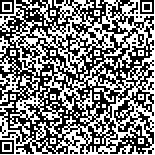下载中心
优秀审稿专家
优秀论文
相关链接
摘要

中国首个自主火星探测任务“天问一号”探测器于2020-07成功发射,其搭载的中国首台火星车“祝融号”将在着陆火星后开展巡视探测,获取中国火星探测的原始科学数据。识别火星表面岩矿类型对于了解火星的大气变化、环境状态、地质演化以及生物宜居性等具有重要意义。本研究利用“祝融号”火星车搭载的多光谱相机载荷鉴定件(8个波段)在地球环境下拍摄并获取了18种火星表面岩矿的多光谱影像数据。基于该数据所开展的火星岩矿类型的识别研究可为未来基于“祝融号”多光谱相机数据进行火星表面岩矿的原位识别提供指导。本文所采用的基于多光谱影像波段运算和彩色图像HSV颜色特征直方图的岩矿识别方法,可从多光谱特征和颜色特征两个层面来识别不同类型的岩矿。所使用的多光谱影像数据是在太阳高度角约60°、拍摄高度1.8 m、拍摄角度约37°的条件下采集所得。在该实验条件下,两种识别方法共提取出12种岩矿的识别指标。基于多光谱影像波段运算可以区分出在8个特定波段下具有突出光谱特征的岩矿类型,而基于图像HSV颜色特征可区分出颜色特征分布较为集中的岩矿类型。同时,研究发现拍摄角度不同会对岩矿的识别效果产生不可忽略的影响。
China’s first autonomous Mars exploration mission probe “Tianwen-1” was successfully launched in July 2020, and the rover of “Tianwen-1” successfully landed on the pre-selected landing area in the southern Utopia Plain of Mars on May 15. After landing on Mars, China’s first Mars rover “Zhurong” will carry out inspections and bring the raw scientific data for Chinese Mars exploration. The multispectral camera mounted on the “Zhurong” rover can be used to study the types of mineral and rock near the landing area. Identifying the types of mineral and rock on Mars is of great significance for understanding the Martian atmospheric change, environmental conditions, geological evolution, and future livability. The study in this article selected 18 kinds of common mineral and rock on the surface of Mars, and shot these mineral and rock with the same multispectral camera as on “Zhurong” rover in the earth environment. Then, this study uses the obtained multispectral image carry out the research of mineral and rock identification, hoping to provide guidance for future in-situ identification of mineral and rock on the surface of Mars based on the “Zhurong” multispectral camera data. Considering that 8-band spectral data is not enough to capture the spectral characteristics of all mineral and rock, it will result in fewer mineral and rock identified, this paper uses color features to assist in the identification of mineral and rock. This paper uses band operation based on multispectral image and HSV color feature histogram extraction based on color image to identify different types of mineral and rock. The above method can identify different types of mineral and rock from the perspective of multispectral features and color features. This study collected multispectral images of mineral and rock under three different shooting conditions, and found that the spectral characteristics of mineral and rock may change under different shooting conditions, which will have an impact on mineral and rock identification. The multispectral image data used in this paper was collected under the conditions of the solar elevation angle at about 60 °, the shooting height at 1.8 meters and the shooting angle at about 37°. Under this condition, the research method in this paper has extracted identification indexes of 12 kinds of mineral and rock. The identification indexes corresponding to specific mineral and rock are listed in the article, all results are based on the above shooting condition. The study shows that: using the band operation based on multispectral image, mineral and rock with prominent spectral characteristics under 8 specific bands can be identified; and using color feature histogram extracted from HSV color image, mineral and rock with a relatively concentrated color feature can be identified. In addition, since different shooting conditions will have an impact on the identification of mineral and rock, it is necessary to do the identification research under different conditions in the future.

